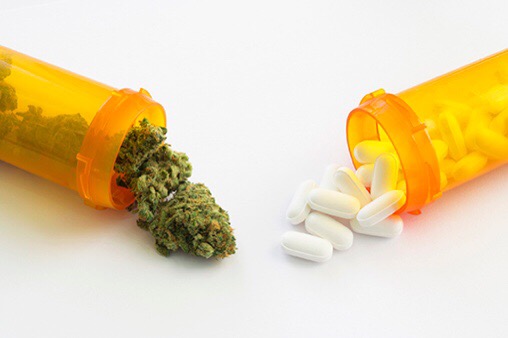Pot, Pills, and People
- Mark Pew – SVP Preferred Medical
- Kathleen Collins – Senior Clinical Pharmacist, Craig Hospital
- Jamie Goff – Director of Workers’ Compensation Claims, BETA Healthcare Group
- Kevin Roberts – Partner, Hanna Brophy
The opioid epidemic has evolved over time from heroin to fentanyl to carfentanyl. Each drug is more powerful than the last one, and each drug is associated with higher death rates. There is a direct link between the opioid epidemic and prescription painkillers as those addicted to prescription pain killers are 40 times more likely to become addicted to heroin.
The problems with opioids is not necessarily the high dosage, but the duration. These drugs were designed for short term use in an acute pain situation, and they are very effective if used in that matter. However, they were inappropriately prescribed which led to the problems we have seen with this growing epidemic. Because of all the problems, many new regulations have been introduced to limit prescription opioid prescribing. Unfortunately, one of the problems associated with these new regulations is that they cast a broad brush and end up inhibiting the appropriate use of the medications.
Marijuana is a more unique drug is that is remains in your system long after it’s impairment effect has worn off. Someone will test positive for marijuana days or even weeks after use. A big problem around marijuana is that there is no established standard for what constitutes “impairment”. There are a few states that have established a threshold for THC concentration that denotes impairment, but other states have rejected this standard as arbitrary and not supported by science.
Employers are very challenged when it comes to drug testing policies. Many employers have stopped pre-employment drug testing that included marijuana because they could not get enough qualified applicants thought the testing process to meet their hiring needs. OSHA has pushed back on employers having a blanket post-accident drug testing policy as they feel this discourages accident reporting. They will allow targeted post-accident testing if there is a reasonable suspicion that impairment may have caused the accident.
It is just a matter of time before recreational marijuana is legalized in the United States. There are only four states that do not allow marijuana in some form. Recreational marijuana is now legal in Canada and will soon be legal in Mexico. The social realities of legal marijuana is something that employers will need to be prepared to address.
There is lots of talk about the potential for medical marijuana as an alternative to opioids in workers’ compensation. Five states have required carriers to reimburse injured workers’ for medical marijuana. Some carriers have been willing to consider medical marijuana as an alternative to opioids as there are lower costs and side effects associated with it. There is some science around medical marijuana for pain relief, but studies about this have been very limited. There are also studies that show marijuana is not much more effective than a placebo for pain relief.
There are also some great pain management alternatives that do not involve medications. Aggressive physical therapy is an example. Physical activity has been shown to decrease pain. An anti-inflammatory diet can reduce pain caused by inflammation. If you are morbidly obese that is going to contribute to your pain. Multidisciplinary pain management approaches have been shown to be very effective as well. These programs include a significant psychological component as more studies are showing that pain is the brain’s reaction to a stimulus and that addressing the psychological element is key to pain relief. Cognitive behavioral therapy is a long proven method to help address the psychological elements of pain.


